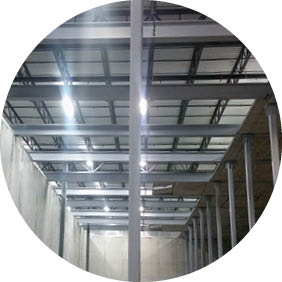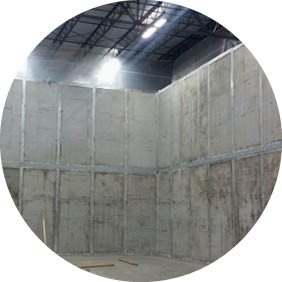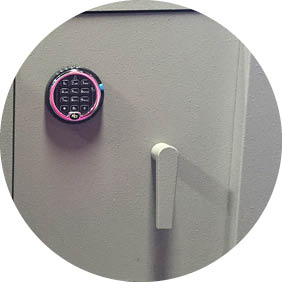Controlled Substance Security Requirements
D.E.A Approved Controlled Substances Vaults
DESIGNED TO HOLD SCHEDULE I & II DRUGS UNDER SEC 1301.72
Vault Structures is a leader in providing D.E.A. approved controlled substance vaults of all sizes and configurations, both nationally and internationally. Although international standards vary due to local requirements, Vault Structures is able to comply with most specifications. From consulting, designing, manufacturing, delivery, and installation, Vault Structures offers an array of services to help efficiently carry out the needs of its clients using its own factory - trained personnel. In addition, Vault Structures will assist in the interfacing with the D.E.A as necessary. Although other manufacturers claim they are turnkey providers, they do not maintain control of their projects as they sub-contract some phases. Vault Structures has recognized this gap and is committed to being a turnkey provider for all its projects with the continuous support of well -trained staff members.
WHAT TO LOOK FOR IN A CONTROLLED SUBSTANCE VAULT
The majority of controlled substance vaults are used as “warehouses” equipped with racking for both finished products and raw materials.
Most of the vaults require forklifts and pallet loaders to easily move the materials within the vault. The necessary door(s) size to accommodate the above machinery should have a clear opening of 60”W x 85”H or greater. The door(s) must meet D.E.A. standards under SEC. 1301.72.
The vaults must reach heights of 30’ or more to allow for the industry’s use of “rack storage”. These oversized vaults require a superstructure of steel beams and columns which must meet local and state codes. In many cases this will also include earthquake standards. The vault must meet D.E.A standards under SEC. 1301.72.
With the use of steel beams, columns, and U.L. approved panels, it is essential that all the components fit together in such a way that nothing can be “passed through” any opening to the outside. This is extremely important in the design of D.E.A. vaults as the stored products are extremely small, potentially dangerous, and very valuable on the illegal market. With this in mind, the steel selection is critical and the panels must fit correctly within the beams.
The controlled substance vaults must provide equal protection on all sides, roof, and floor. When the existing floor does not meet D.E.A. standards for generic construction, it may be substituted with a generic floor or U.L. listed floor similar to the walls and roof. The local D.E.A. agent will be helpful in providing advice if the existing floor needs to be replaced. Vault Structures offers a 2” panel (the thinnest U.L. listed panel on the market) that is ideal for a vault floor, or any other area where thickness is a concern.
THE INTRODUCTION OF “CONDITIONED AIR” AND “RETURNED AIR”
Air ventilation is handled through U.L.- approved vault vent ports. The vent ports have a built- in trap to prevent any pass through attempt in the event that the vent ports are located in any area that might be reached by personnel.
THE INTRODUCTION OF FIRE SUPPRESSION SYSTEMS
The need for fire suppression systems is a major requirement for pharmaceutical vaults and can be accomplished without compromising the integrity of the vault. The use of a main line within the vault and the running of “feeders” are possible. An alternative is the pre-positioning of 1 ½” holes (maximum) within the panels for “sprinkler heads”.
THE INTRODUCTION OF ELECTRICAL SYSTEMS
Conduit connections between the inside and outside of the vault are provided for the panels prior to construction. These locations allow the electric, alarm, cameras, computer, phone, and other electronic communication systems to be easily connected. The normal size for the conduit normally is 1”-1 1/2” in diameter. These are grouped in various panels.



Vault Structures, Inc. | 3640 Work Drive | Fort Myers, FL 33916 | Telephone: 239-332-3270 | Toll Free: 800-226-3990 | Fax: 239-332-5593

